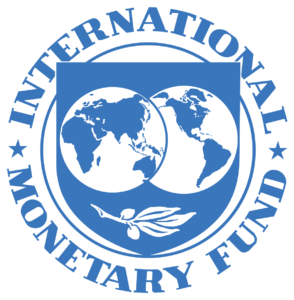Typologies of Money Laundering
Typologies of money laundering, as elucidated in the realm of illicit finance, connote an extensive array of methodologies, stratagems, and patterns employed by both individuals and criminal enterprises to obfuscate the provenance of illegitimate funds and integrate them surreptitiously into the legitimate financial framework.
 Written by Erling Andersen
Written by Erling Andersen
Definition: Typologies of money laundering! refer to specific patterns and techniques employed by criminals to conceal the illegal origins of their funds. These typologies help identify common characteristics and indicators of money laundering! activities, enabling authorities and financial institutions to detect and prevent such illicit transactions.
Money laundering! is a complex process that criminals employ to disguise the origins of illegally obtained funds, making them appear legitimate. To achieve this, various typologies of money laundering! have emerged over time, each representing different methods and techniques used by criminals. Understanding these typologies is essential for effective anti-money laundering (AML) efforts and the prevention of illicit financial activities.
Historical View
The concept of money laundering! has existed for centuries, but the formal recognition and study of typologies began in the 1980s. With the rise of global financial transactions and the increasing complexity of criminal schemes, authorities and AML professionals recognized the need to categorize money laundering! methods. This led to the development of typologies based on empirical evidence and investigative experience.
Over the years, typologies have evolved and expanded as criminals adapt to new technologies. Also regulations, and enforcement measures. Law enforcement agencies and financial institutions continually analyze and update typologies to stay ahead of emerging money laundering techniques.
Practical Examples
To further illustrate the different typologies of money laundering, let’s explore ten practical examples:
- Trade-based money laundering! Criminals manipulate trade invoices and payments to disguise the proceeds of illegal activities as legitimate trade transactions.
- Shell company schemes: Criminals create fictitious companies with no legitimate business operations to funnel illicit funds and create layers of complexity in financial transactions.
- Smurfing: Also known as structuring, smurfing involves breaking down large sums of money into smaller deposits or transfers to avoid detection by authorities.
- Real estate money laundering! Criminals purchase properties using illicit funds, often through shell companies, to conceal the origins of the money.
- Virtual currency tumbling: Criminals use cryptocurrency tumblers or mixers to obscure the transaction trail and make it difficult to trace the source of funds.
- Trade-based value manipulation: Criminals manipulate the value of goods or services in trade transactions to overstate or understate their worth, facilitating the movement of illicit funds.
- Bank capture: Criminals infiltrate financial institutions to gain control over accounts, enabling them to launder money through legitimate banking channels.
- Black market peso exchange: Criminals use intermediaries to exchange illicit funds from drug sales in one country for legitimate currency in another country, taking advantage of favorable exchange rates.
- Online payment systems: Criminals exploit digital payment platforms to transfer illicit funds, often using multiple accounts and complex networks to obscure the transactions.
- Art and antique market: Criminals invest illicit funds in high-value art pieces or antiquities, which can be easily transported and sold, providing a means to legitimize the money.
Statistics
Understanding the scale and impact of money laundering! is crucial in combating this global threat. Here are ten statistics that shed light on the magnitude of the issue:
- According to the United Nations Office on Drugs and Crime (UNODC), it is estimated that 2% to 5% of global GDP, or $800 billion to $2 trillion! is laundered annually.
- In 2019, the Financial Action Task Force (FATF) reported that less than 1% of global illicit financial flows were confiscated or frozen.
- Approximately 95% of money laundering! cases go undetected, highlighting the need for improved detection and prevention measures.
- The International Monetary Fund (IMF) estimates that developing countries lose between $1 trillion and $1.6 trillion! per year due to illicit financial flows, including money laundering.
- Around 40% of global money laundering! cases are linked to corruption and bribery, undermining the integrity of governments and institutions.
- In 2020, the Financial Crimes Enforcement Network (FinCEN) received over 2 million suspicious activity reports (SARs) in the United States alone.
- A study by Europol revealed that organized crime groups generate an estimated €110 billion to €150 billion! in illicit profits each year.
- In a survey conducted by PwC, 47% of global financial institutions reported that they had experienced money laundering! incidents in the past two years.
- The Global Slavery Index estimates that profits from human trafficking, a form of modern slavery, generate approximately $150 billion! each year, much of which is laundered.
- According to the Basel Institute on Governance, only about 1.1% of the global proceeds of crime are seized and confiscated by authorities.
Incidents
Money laundering incidents have had profound impacts on individuals. Also businesses, and economies worldwide. Here are ten notable incidents that highlight the consequences of this illicit activity:
- The Panama Papers: In 2016, a massive leak of documents revealed the widespread use of offshore companies for money laundering! tax evasion, and other illicit activities.
- The Danske Bank scandal: One of the largest money laundering! scandals in history, involving billions! of euros, exposed serious deficiencies in the anti-money laundering controls of the Danish bank.
- The Bernard Madoff Ponzi scheme: Bernie Madoff’s elaborate Ponzi scheme defrauded thousands of investors, resulting in losses of approximately $64.8 billion.
- The HSBC money laundering case: HSBC faced allegations of facilitating money laundering! by drug cartels and other criminal organizations, leading to a $1.9 billion! settlement with U.S. authorities.
- The 1MDB scandal: The 1Malaysia Development Berhad (1MDB) scandal involved the misappropriation of billions! of dollars from a Malaysian state investment fund, with the funds being laundered through various international financial institutions.
- The Zhenli Ye Gon case: Zhenli Ye Gon, a Chinese-Mexican businessman, was linked to a massive money laundering! operation involving the smuggling of precursor chemicals for methamphetamine production.
- The Wirecard collapse: German payment processor Wirecard filed for insolvency in 2020 after revelations of a $2.1 billion! accounting fraud and allegations of widespread money laundering.
- The Laundromat scandal: The Laundromat was a vast money laundering! operation that moved approximately $20 billion! out of Russia through a network of fictitious companies and offshore accounts.
- The Car Wash Operation: Operation Car Wash was a money laundering! investigation in Brazil that uncovered a massive corruption scheme involving the state-owned oil company. Also Petrobras, and prominent politicians.
- The Deutsche Bank case: Deutsche Bank faced scrutiny for its role in facilitating money laundering! resulting in regulatory penalties and investigations.
The Future
The fight against money laundering! is an ongoing battle that requires constant adaptation to emerging trends and technologies. Here are ten future considerations in the realm of money laundering:
- The rise of cryptocurrencies: As digital currencies gain wider adoption, authorities must address the challenges posed by the potential anonymity and cross-border nature of cryptocurrency transactions.
- The role of artificial intelligence: AI-powered technologies can enhance the detection and analysis of suspicious transactions, helping financial institutions stay ahead of money laundering threats.
- Enhanced collaboration and information sharing: Cooperation between financial institutions, law enforcement agencies, and regulatory bodies is vital to effectively combat money laundering on a global scale.
- Regulatory advancements: Governments and regulators are expected to introduce more stringent AML regulations and compliance requirements to mitigate the risks associated with money laundering.
- Focus on beneficial ownership transparency: Identifying the ultimate beneficial owners of companies and assets will be a key area of emphasis to prevent the misuse of corporate structures for money laundering.
- Global harmonization of AML standards: Greater alignment of AML regulations and enforcement across jurisdictions can enhance the effectiveness of anti-money laundering efforts.
- The role of technology providers: AML compliance software, such as Kyros AML Data Suite, will play a crucial role in providing advanced analytics. Also monitoring tools, and automation to assist financial institutions in their fight against money laundering.
- Continued focus on customer due diligence: Strengthening customer identification and verification processes will be essential in detecting and preventing money laundering activities.
- Increased public awareness: Educating the public about the risks and consequences of money laundering! can contribute to a collective effort in combating this illicit practice.
- Combatting emerging laundering! methods: As criminals evolve their techniques, authorities must stay vigilant and adapt their strategies to counter new typologies and money laundering! methodologies.
Explore the power of Kyros AML Data Suite today and take a proactive stance against money laundering.
As the fight against money laundering! continues, organizations like Kyros AML Data Suite play a vital role in empowering financial institutions with advanced AML compliance solutions. Kyros offers a comprehensive suite of tools and technologies, leveraging artificial intelligence and machine learning to enhance detection. Also investigation, and reporting capabilities. By harnessing the power of data and advanced analytics, Kyros enables financial institutions to stay one step ahead in the fight against money laundering.
Conclusion
Money laundering is a pervasive and complex issue that poses significant threats to the integrity of the global financial system. Understanding the typologies of money laundering! is essential in identifying and combating these illicit activities. By recognizing the methods employed by criminals, authorities and financial institutions can implement robust anti-money laundering measures to detect. Also prevent, and deter money laundering activities.
The fight against money laundering! requires a multi-faceted approach that involves collaboration between governments, regulatory bodies. Also law enforcement agencies, and technology providers. As criminals continually evolve their tactics, it is crucial for AML professionals to stay informed about emerging trends and adapt their strategies accordingly.
With advanced AML compliance solutions like Kyros AML Data Suite, financial institutions can leverage cutting-edge technologies to strengthen their anti-money laundering efforts. By harnessing the power of data analytics, artificial intelligence, and machine learning, Kyros empowers organizations to identify and mitigate money laundering risks effectively.
Together, we can work towards a world where financial systems are safeguarded against money laundering, promoting transparency. Also integrity, and trust.
Share article on



